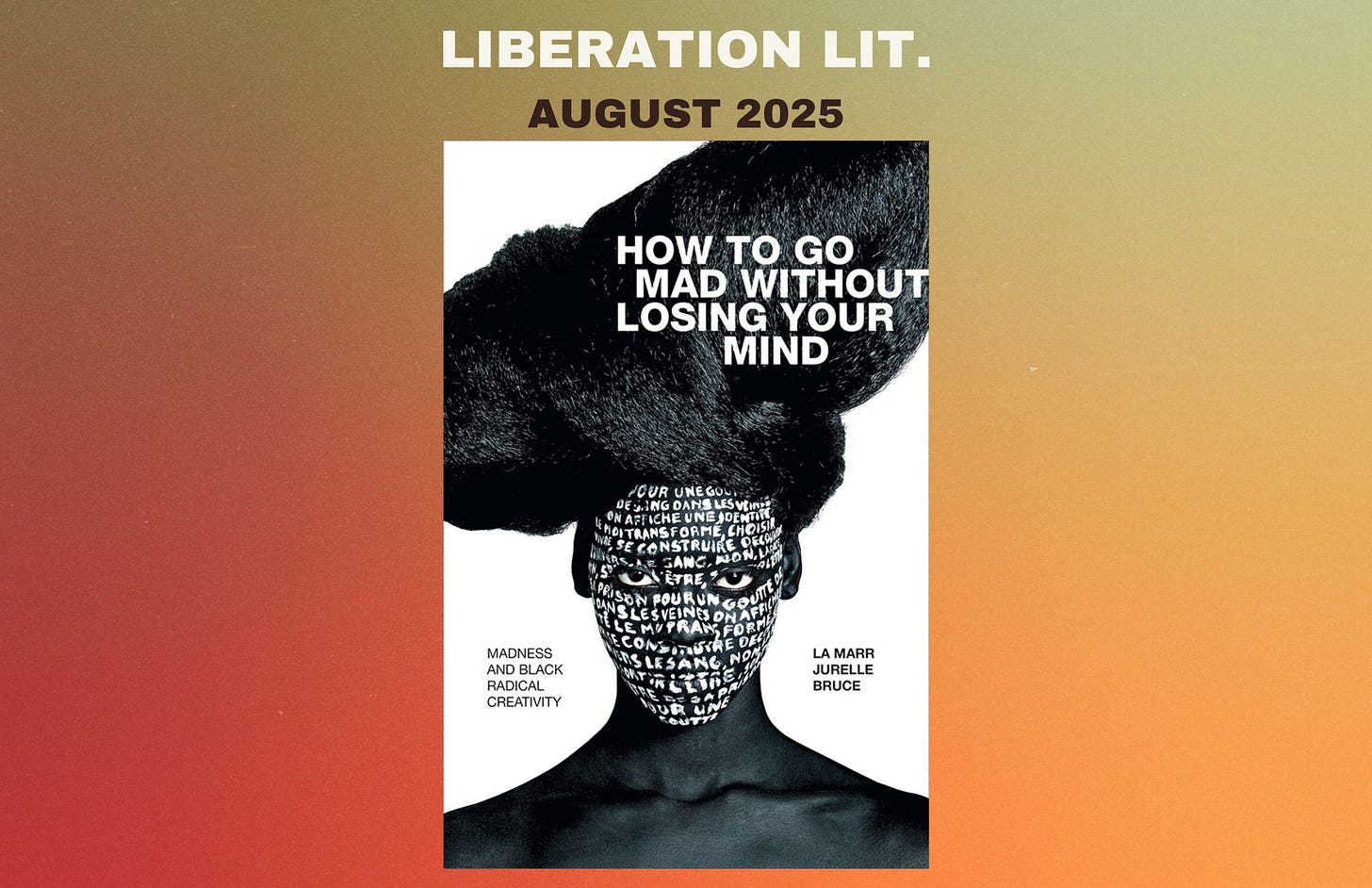Reading Guide: "How to Go Mad Without Losing Your Mind" Sanity and Oppression
liberation literate. - book club guide - aug. 2025
How to Go Mad Without Losing Your Mind by La Marr Jurelle Bruce reframes madness as a radical, creative force rather than pathology. Centering Black queer artists and thinkers, Bruce explores madness as a method of survival, refusal, and resistance against oppressive systems that police sanity. The book highlights how Black radical creativity uses breakdowns to disrupt norms, challenge surveillance, and reclaim agency. Redefining madness as a powerful act of liberation.
Resources:
Books Non-Fiction:
The Protest Psychosis by Jonathan Metzl
Black Madness::Mad Blackness by Therí A. Pickens
Care Work: Dreaming Disability Justice by Leah Lakshmi Piepzna-Samarasinha
Afropessimism by Frank B. Wilderson III
Crazy Like Us: The Globalization of the American Psyche by Ethan Watters
Black Skin, White Masks by Frantz Fanon
Books Fiction:
Parable of the Sower by Octavia Butler
Luster by Raven Leilani
Severance by Ling Ma
Videos:
La Marr Jurelle Bruce in conversation with Farah Jasmine Griffin (available on YouTube)
La Marr Jurelle Bruce | Ms. Lauryn Hill Sings Truth to Power in the Key of Madness (available on YouTube)
Reflection Questions:
What does “madness” mean to you after reading this book?
Has the book changed how you think about mental health and creativity?
How can madness be a way of resisting unfair systems?
How do you see society treating people who don’t fit the idea of “sane”?
What part of the book stuck with you the most?
How can you or your community support people labeled as “mad” or different within our present society?
Digging Deeper Questions:
Analyze the role of surveillance and public spectacle in policing Black madness as described in the book. How does this relate to broader theories of state control, racial capitalism, and carceral power?
Discuss the concept of mad methodology as a tool for political resistance. How does this intersect with other frameworks like Afropessimism, Black feminist thought, or decolonial theory?
How do art, music, and performance function as survival tools for the mad? What forms of expression or resistance might be dismissed as “madness” when they’re actually wisdom?
How does Bruce’s analysis of public figures like Lauryn Hill, Nina Simone, and Dave Chappelle function as a critique of neoliberal commodification of Black pain and trauma? How do their “madness” narratives complicate celebrity culture?
Bruce discusses how Black artists’ public “breakdowns” are often surveilled and commodified. How does this reflect broader societal attitudes toward Black emotional expression?
Consider the ethical implications of pathologizing Black emotional expression. How does this connect to historical and contemporary practices of medical racism and psychiatric violence?
If sanity is socially constructed, what would a more liberatory, collective understanding of mental health look like especially in Black, queer, and marginalized communities?
Where is the line between individual madness and collective dysfunction? How can we discern which kinds of “unwellness” are personal, and which are symptoms of oppressive systems?
How do we support people experiencing madness without forcing them back into legibility or institutional control? What does truly non-carceral mental health care look like?



